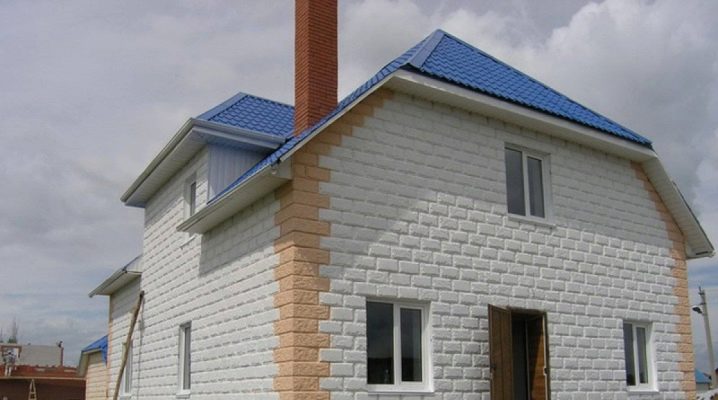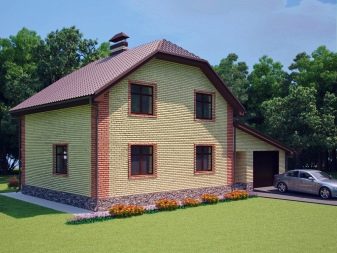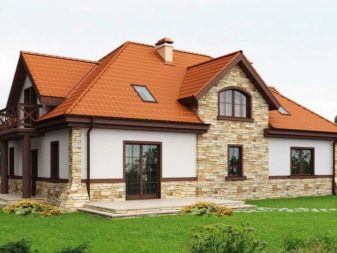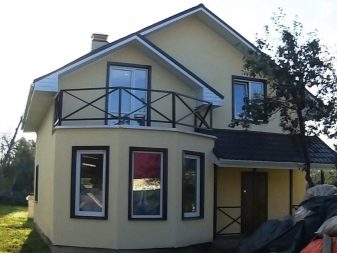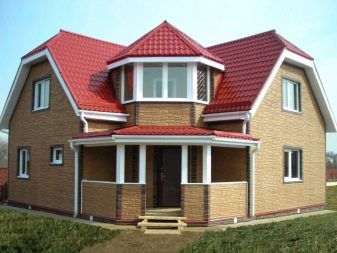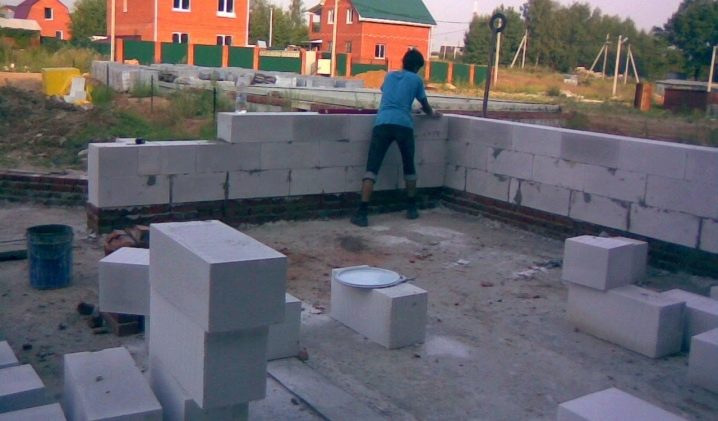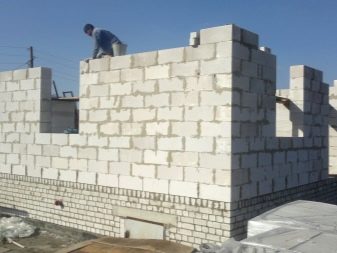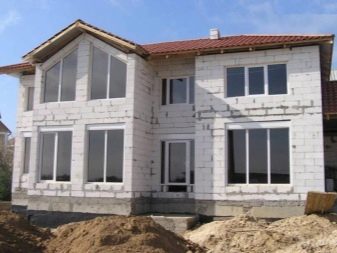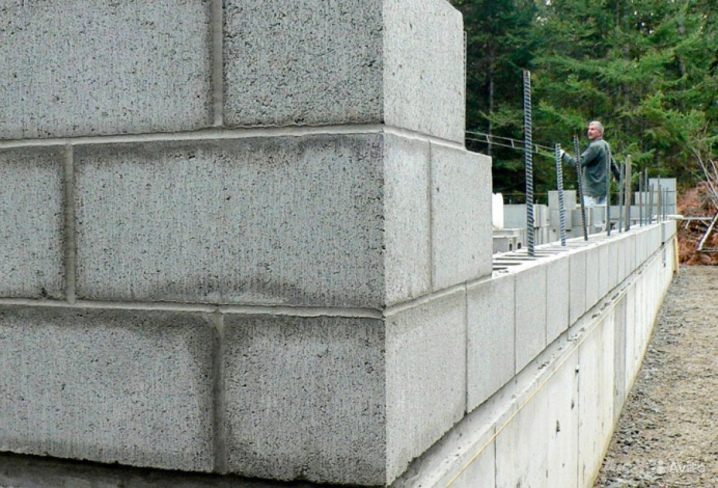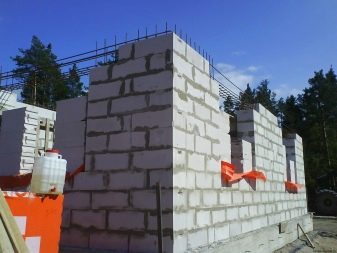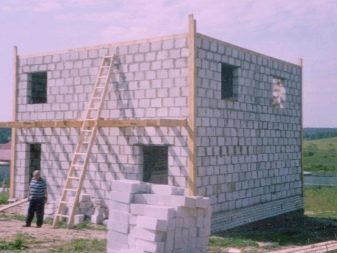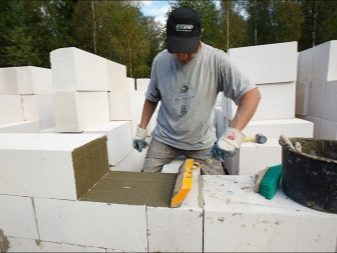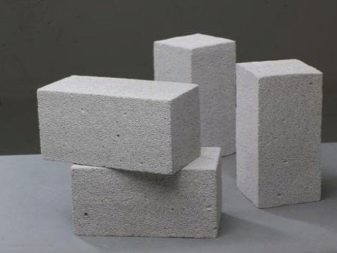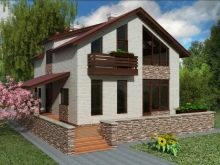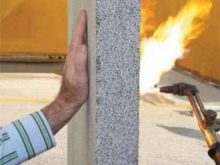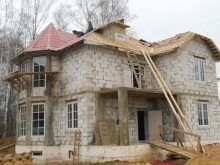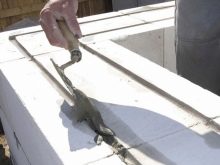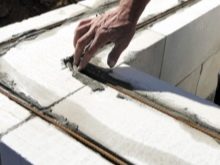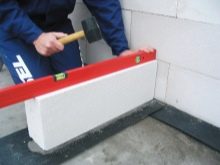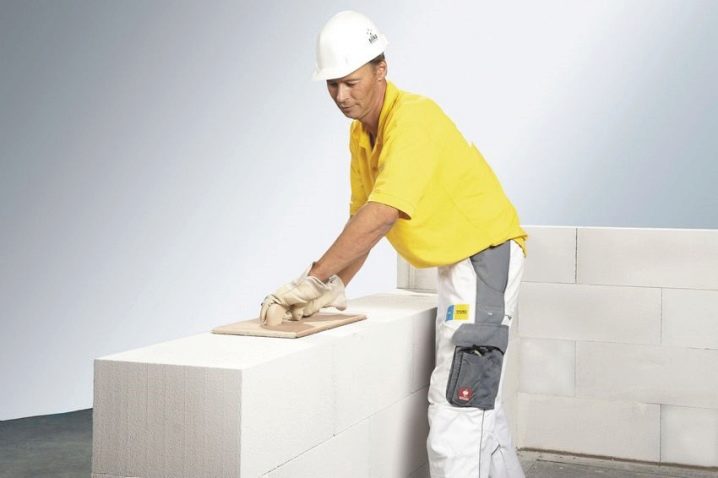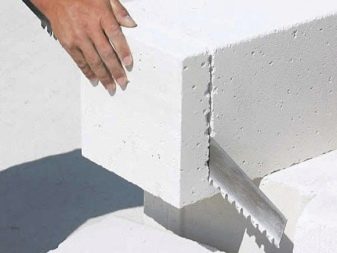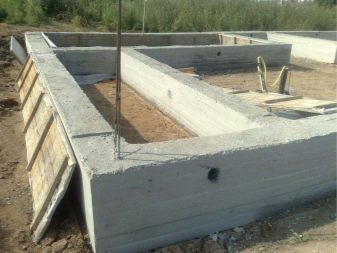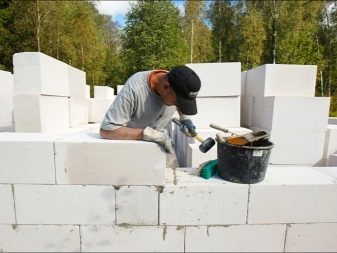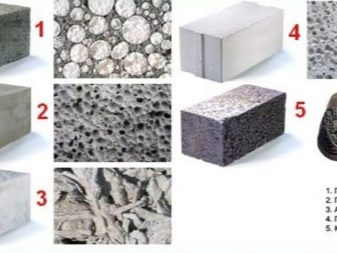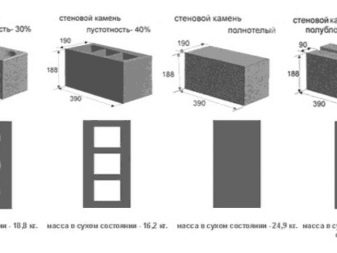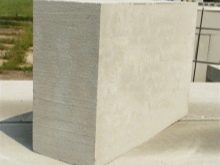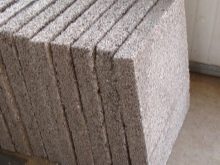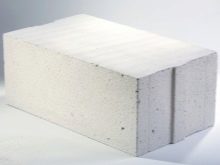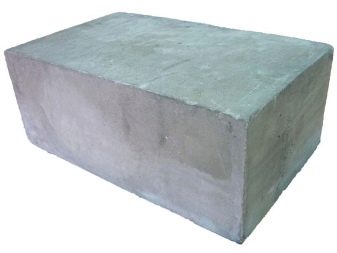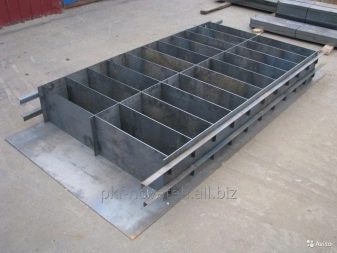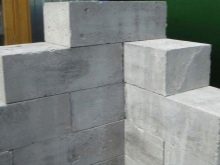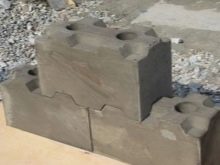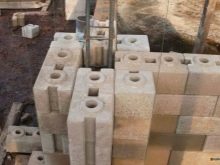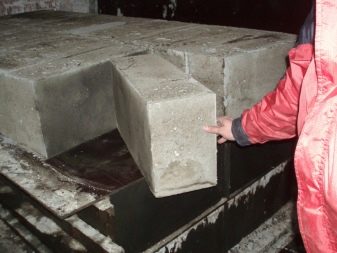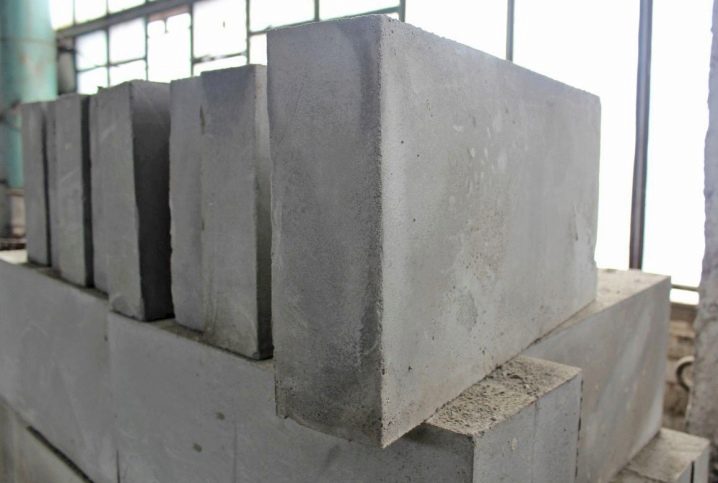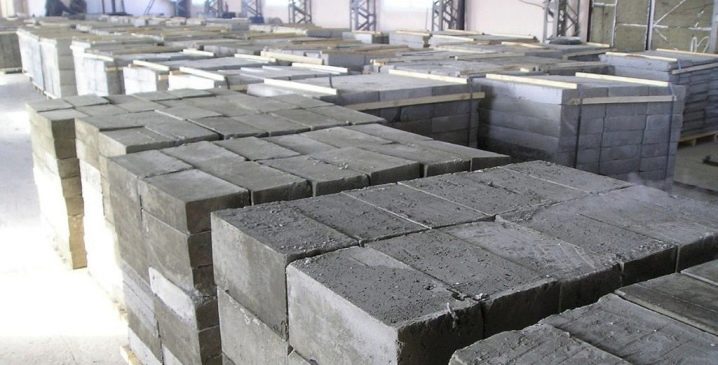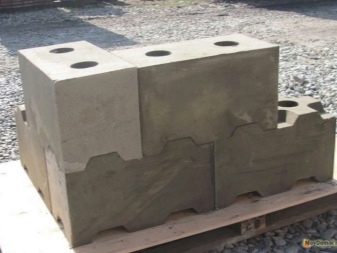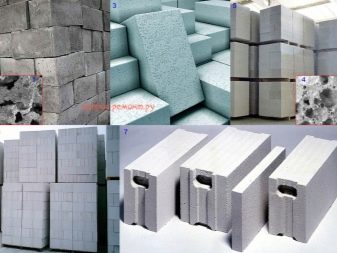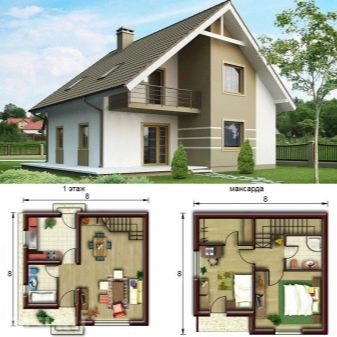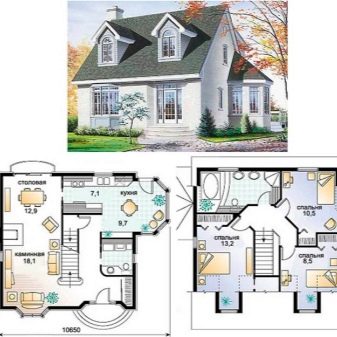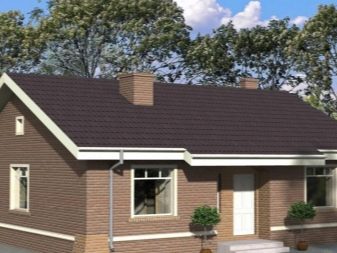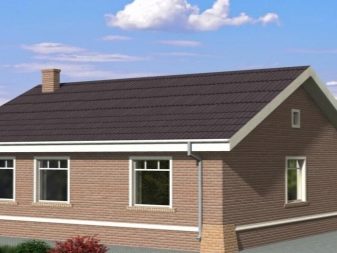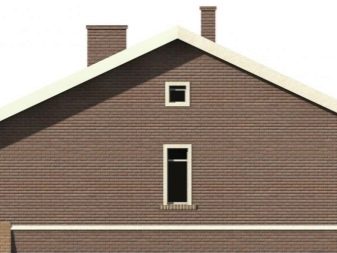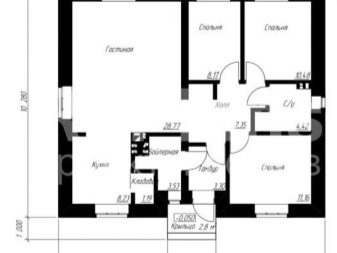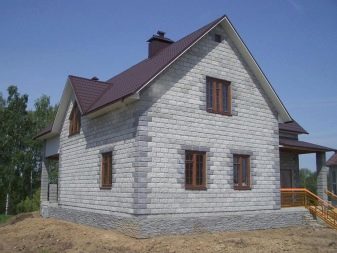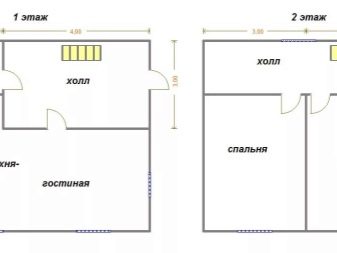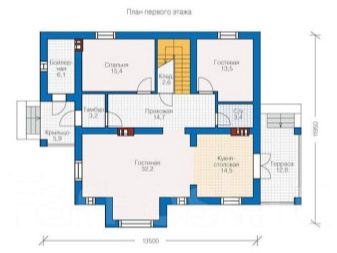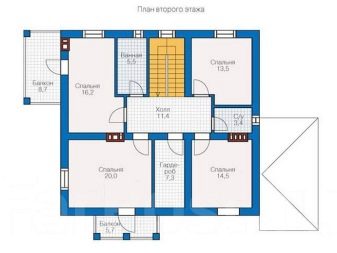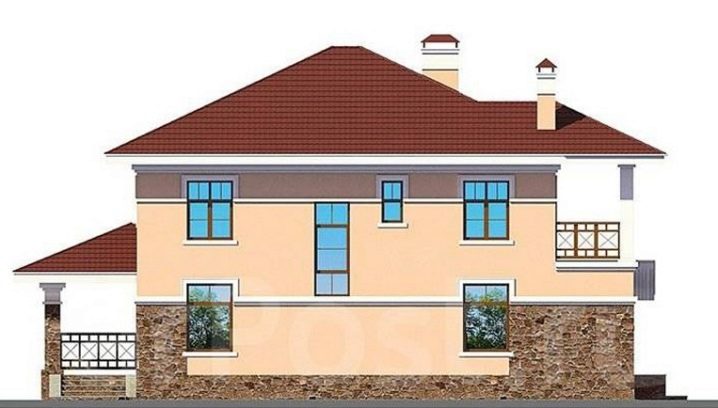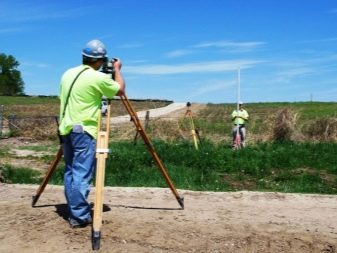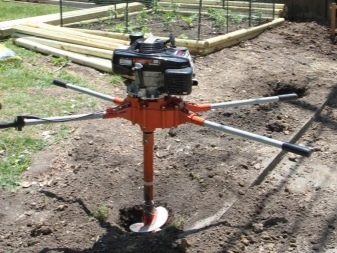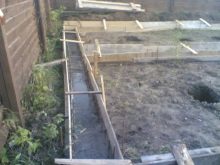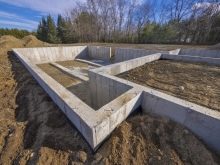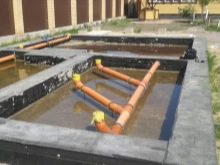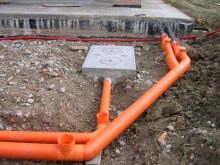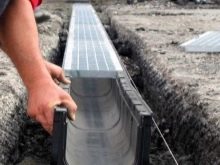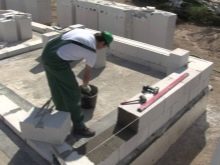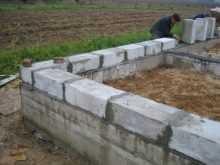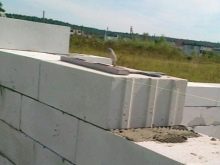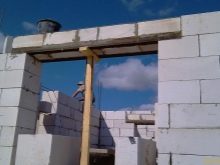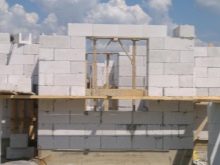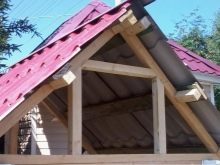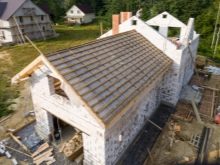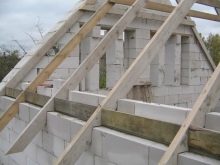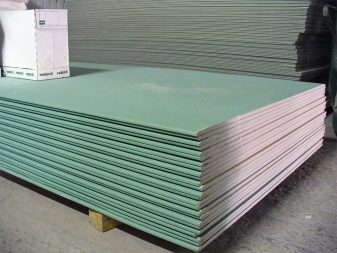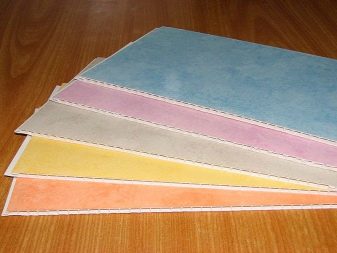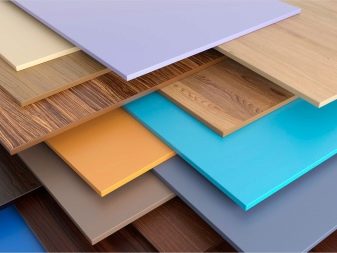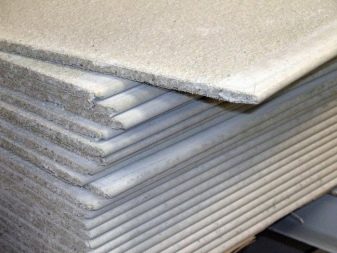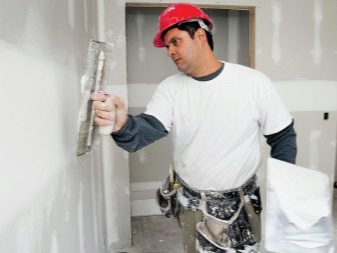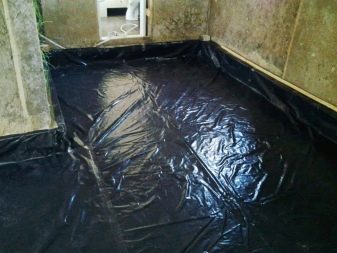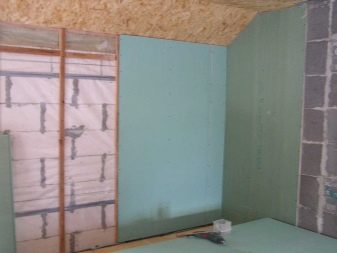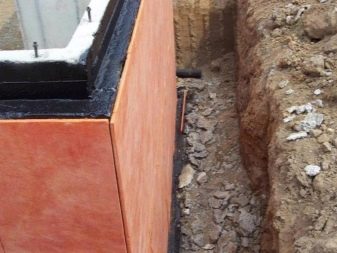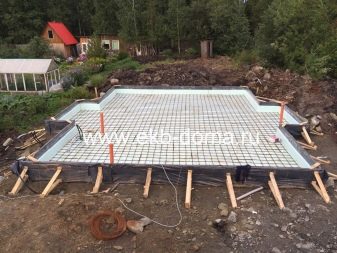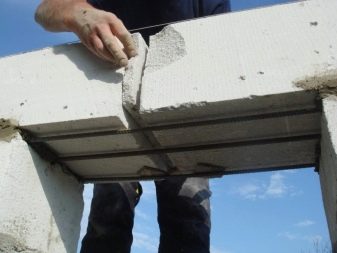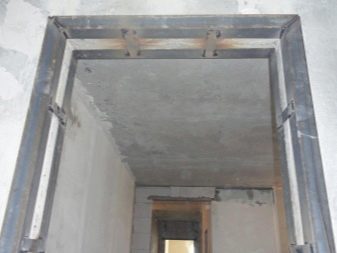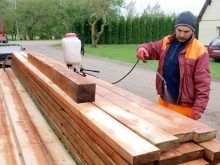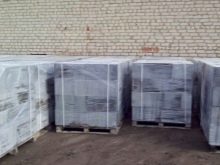Foam blocks houses: projects and construction
One of the most popular materials used in modern construction of houses is the foam block. It is chosen by many people who plan the construction of a single-story or multi-storey housing.
It is worth considering the features, pros and cons of private houses built of foam blocks, as well as some interesting projects of similar buildings, to find out how to build them with your own hands.
Special features
It's no secret that the modern building materials market has a rich assortment from which you can choose the right products for any budget. Many consumers today prefer not only reliable and durable, but also inexpensive materials for the construction of private houses. All listed requests are answered by foam blocks.They are good because they make strong and strong constructions that do not cost their masters too much.
By itself, the foam block is a building material that has a low weight. Thanks to this feature, working with him is quite easy. In addition, foam blocks are distinguished by a special porous structure, although the latter factor cannot be called positive, since it affects the strength characteristics of such a material.
You can build a house of foam blocks with your own hands. In our time, such buildings are very common, because they are inexpensive and are built in a short time. Some masters compare the construction of such a block house with the construction of a designer, because they fasten these building materials without using a special solution, and the blocks themselves are very light and voluminous.
Despite such distinctive features, for the construction of houses from foam blocks you need to make clear plans, as is the case with any other erections. Only with a well-designed plan, you can build a really high-quality, reliable and safe block house.
Many users are wondering what distinguishes foam blocks from all known gazoblokov. It should be noted that the former have a geometry inferior to the gas blocks. The forming process in the cassettes allows you to support the most accurate dimensions, if the company has a good fit, but this is extremely rare.
In most cases, foam blocks are made by small manufacturers. Large investors prefer to invest in high-tech equipment for aerated concrete.
Due to defects associated with the shape of foam blocks, after building houses, there are often problems aligning various surfaces. Leave the clutch without this refinement is impossible, because it can lead to the appearance of cold "bridges". Despite such nuances, foam blocks are still popular materials in construction. They are chosen not only because of their cheapness, but also because they can build a house with their own hands. You do not need to possess rich experience or special knowledge. It is only necessary to have patience, free time and good instructions, from which it will not be possible to depart at any stage of the construction.
Cons and pros
Foam block houses are not uncommon in our time. They are in almost every street. The popularity of such erections is explained by the following positive qualities:
- one of the main advantages of foam blocks is their low thermal conductivity, thanks to this characteristic, such buildings are quite warm and cozy;
- foam blocks themselves have a small weight, which distinguishes them from many similar materials, thanks to this quality, you can build your own house of such materials without even turning to helpers - everything can be done alone;
- due to their low weight, foam block houses do not give too large loads on the foundation foundations;
- foam concrete houses are soundproofed;
- such materials are quite voluminous, so the houses of them are created in a short time and without any special energy costs;
- another important advantage of foam block houses is that they are inexpensive; it pleases many consumers who are not ready for too serious expenses;
- if necessary, the blocks can be filed seamlessly, which speaks of their flexibility and ease of operation; in addition, if necessary, they can be used to make various holes without in any way harming the unit itself;
- In most cases, foam blocks are environmentally friendly, they do not harm health and do not cause allergic reactions; Of course, synthetic materials are sometimes used in their production, which cannot be called absolutely safe, but such components in blocks make up less than half a percent;
- similar constructions can boast of low hygroscopicity;
- foam blocks are durable materials from which the same durable houses are obtained;
- similar structures are not afraid of fire, because they are not flammable and do not sustain combustion;
- Many people believe that foam blocks only make fairly boring and monotonous buildings, although in reality this is not the case; from this material you can build a house in any style, the main thing is to turn on the fantasy and stock up on the necessary skills;
- such structures do not require decorative decoration; it is usually resorted to in order to give the structure a more aesthetic appearance, but such components in this case have no particular functional significance.
As you can see, there are quite a few advantages to foam-block houses. That is why they are so popular in our time.But do not flatter yourself and think that such constructions are impeccable. They have a number of negative qualities that you need to know about if you decide to build a foam concrete block on your site.
- First of all, it is very important to take into account the fact that such buildings shrink by 2–3 mm per 1 meter of meter, so it will be possible to move on to their interior decoration in only six months, or even more. Shrinkage in this case is caused by a rather long reaction between the individual components of the foam concrete solution.
- As mentioned above, foam blocks have a structure with pores. Due to this peculiarity, such materials become less heat-conducting; installation of fastenings in them is not so simple. Because of this, during construction works, craftsmen have to stock up with special fasteners designed specifically for foam blocks.
- It is not necessary to decorate such block houses, but without such an addition the erection may not look the most accurate and aesthetic. Here you need to consider that for such foundations should acquire specialized paint and plaster, designed specifically for foam concrete.
- Foam blocks need reinforcement.Armature must be laid in the places of openings. In addition, reinforcement will be needed on each 4–5 rows of blocks. If you do not ensure the construction of high-quality reinforced belt, you will not be able to install reliable floors and a strong system of rafters.
- Modern construction market is literally flooded with falsifications. Since the raw material for the production of foam blocks is inexpensive, they are often made artisanal. As a result of this work, low-quality building materials are obtained, which are not recommended for construction of a residential house.
- One of the most important drawbacks of block structures is that the foam block is a rather fragile material. Of course, because of this, it is much easier to get off and is lightweight, but it cannot boast a good bearing capacity.
- If you want to put a house of foam blocks, then you should consider that for this you need to make special calculations of the load on materials. It is necessary to carefully and scrupulously calculate the thickness of the walls and partitions, taking into account any loads. The walls in such houses are most often built with a small margin of safety.
- Houses made of materials with cells, can not boast a solid and rich appearance. To eliminate this drawback can only one right way - to use high-quality finishing materials.
- For foam block houses, it is necessary to equip shape-making foundation foundations. Such designs allow to level not the highest indicators of durability on a bend by which foam concrete is characteristic.
- As mentioned earlier, foam blocks do not have ideal geometry, such as the same aerocrete. Because of this, every single detail during construction has to be ground or trimmed, which often takes quite a lot of time.
From the above, we can conclude that there are plenty of disadvantages in the foam block erections. Of course, a lot depends on the quality of a particular product. No less important is the skill of the person who took up the construction of a block house.
If it is decided to build such a dwelling independently, then all the listed disadvantages should be taken into account in order to avoid many possible problems and shortcomings.
Types and choice of material
There are several types of foam blocks.These building materials may vary in both the direct manufacturing technology and the main characteristics.
All types of foam blocks are divided on the basis of the following parameters:
- density difference;
- on what technology is made;
- what hardening method was applied;
- on the specific design of the foam block.
According to their performance, these building materials are divided into several subtypes.
- Constructional. These types of foam concrete blocks can withstand impressive loads. Often they are used in the construction of multi-storey buildings. Large construction objects of structural-type foam blocks are additionally insulated, since this material is characterized by high thermal conductivity.
- Thermal insulation. Similar variants of foam blocks are fundamentally different from structural copies. They are not thermally conductive. Thanks to this feature, the living rooms in the house are perfectly protected from the cold from the street. However, it should be noted that the thermal insulation types of foam blocks can not boast of good strength characteristics.For this reason, if this material is used in the construction of a private house, it is usually used as an additional layer designed to improve the insulating properties.
- Structural insulation. These types of foam blocks are universal. They combine increased strength and excellent thermal insulation. These materials are ideally suited for the construction of bearing wall ceilings or conventional partitions. Often, construction and insulation blocks are used in the construction of baths, small buildings or residential houses in one or two floors.
Differ these building materials and production technology. In this case, the decisive role played by the equipment that is used in the manufacture of foam blocks.
- Molded. These building materials have a “talking” name — in the process of their production, special forms are used which have additional partitions in their construction. Making molded foam blocks is considered to be the most economical, although it has one serious drawback - the sizes of the resulting blocks are not exactly calibrated.
- Cut varieties of foam blocks Make a special ready-made mixture of the basic composition by cutting into various elements with a string of steel. A distinctive feature of such materials is that they have ideally smooth corners, and also have sufficient geometric accuracy.
Foam blocks are different from each other and their designs, which should be considered in more detail.
- Wall. These types of materials are the most popular and in demand. They are in great demand. Wall foam blocks are used in suburban construction, and we can talk not only about a residential house, but also about any household constructions. The properties and characteristics of wall blocks allow their use both in residential and in economic construction.
- For partitions. There are foam blocks designed for the construction of partitions. They are distinguished by a small thickness - 100–150 mm. They are excellent materials for the construction of strong and fairly reliable internal partitions in the house. The main distinguishing feature of such blocks is that they are very easily trimmed if necessary.Due to this quality, from the materials of this modification, the masters perform very original figured partitions or elegant wide openings with arches.
- Special purpose. For the manufacture of special trays most often used special purpose foam blocks. It is in these trays during construction that reinforcement is usually laid.
- Reinforced. These materials are structures made of foam block reinforced with a robust steel frame. As a rule, reinforced types of blocks are used as jumpers instead of the classic variants of reinforced concrete.
- Custom. Today in the market of building materials there are special foam blocks of non-standard modification. If necessary, various manufacturers produce non-standard copies to order customers.
All types of foam blocks are divided into the following types:
- autoclave - undergo a drying process in an autoclave;
- non-autoclaved - dry in standard conditions or in special steaming chambers.
When choosing a suitable foam block for building a house, you need to consider several important criteria.
- Density materialbut.The specific purpose of one or another foam block directly depends on this parameter. Thus, constructional parts have a density of 1000–1200 kg / m³, structural and insulating - 600–900 kg / m³, and heat-insulating - 300–500 kg / m³.
- Variety block. There are classic options, blocks with voids and Lego foam blocks. The latter type greatly facilitates installation work.
- Grade and category of foam block. If you plan to further finish the block house, then it is permissible to purchase foam blocks of absolutely any category. The second variety is different from the first in that it has no defects. Differences in geometric dimensions are compensated by the size of the seams. However, the selection of individual blocks can "stretch" the time of work, as well as the consumption of adhesive means. For this reason, experts recommend buying better quality first grade materials.
- Blocks of the third grade have more serious damage. Moreover, their porous structure may have certain deviations. It is not recommended to purchase this type of material for the construction of a residential house.
- Pore size. It is worth paying attention to the pore size of foam blocks.The larger they are, the higher the thermal insulation properties of materials are, but their strength will be lower.
- Place and storage conditions. In conditions of high humidity, foam concrete is not seriously affected, unlike aerated concrete. However, some of its characteristics are still reduced in this setting.
- Color block. It is worth paying attention to the color foam blocks. The color should be uniform and uniform throughout the part. The lighter the material, the less cement is present in it.
Design
From foam blocks you can build houses of absolutely any modifications. It can be buildings with one or two floors, with an attic and basement or with a garage.
You should consider several attractive ready-made projects of foam block private houses of different designs and layouts.
House with an area of 86 square meters. m
For the wall material, you can use a combination of foam block and gas block. As a finish, a quality facing brick will be an excellent option. In the role of floors, it is permissible to use wooden beams. Such a structure may have the correct square shape and one floor. At the back door is to build a small porch.
Inside the house, the main square should be set aside under a spacious living room combined with a kitchen. This zone should be separated by a wall, behind which there will be two bedrooms, additionally separated by a partition. Before the second bedroom there is a place for a bathroom, and after it it will be possible to build another bedroom (in the corner of the building).
Between all the listed rooms you need to equip a small hall, right in front of which there is enough space for the boiler room, storeroom and a small vestibule.
Completing such a house neat gable roof, trimmed with shingles.
Two-storey house 6x6 m
An attractive two-storeyed country house with a size of 6x6 m can be built from the foam block. The living area in such a construction will be about 40–60 m². On the first floor there should be a hall with a staircase upstairs (immediately after the entrance door), a bathroom (right behind the hall), and the remaining space should be allocated to a wide living room combined with a kitchen. On the second floor behind the partition to the right of the hall a small but comfortable dressing room will find its place. The remaining half of the floor should be divided into two separate bedrooms.
For the exterior of such an erection, it is permissible to use a decorative stone or brick, and put a flexible tile on the roof of a complex structure.
To the entrance to the house can lead a small porch with a canopy.
Two-storey house of 200–300 square meters. m
On the one hand of the building, a small porch with a neat lean-to canopy should be built at the entrance door. On the opposite side, on the ground floor level, there is a terrace. Inside the house immediately after the porch (opposite) should be located vestibule, and to the right of the entrance area - the boiler room. This part of the house will be reserved for heating and water systems. In front of the vestibule there should be a territory for a hallway, which would divide the rest of the space into two halves: on the right there will be a bedroom and a closet with a staircase, and on the left - a large living room and a kitchen. The hallway area can be “closed” with a compact bathroom and another bedroom to the left of it. In front of the kitchen-dining room, located next to the living room, will look great terrace with an area of 12.8–13 m².
On the second floor, the staircase can share a bathroom and a corner bedroom and go straight to the hall.This area will share another bedroom on the left and a second bathroom on the right. The remaining half of the second floor should be taken under two spacious bedrooms and a small dressing room between them. In the conditions of such a second floor it will be possible to build 2 balconies at once. One of them with an area of 8.7 m² will find its place near the corner bedroom to the left, and the second, a small balcony (5.7 m²) - near the bedroom located right in front of it.
For the exterior of such a luxurious home, you can use peach special plaster for foam blocks. On the roof will look great shingles of red-brown hue, and the lower part of the house should be decorated with decorative stone.
Building
House of foam blocks can be built with your own hands. To do this, it is important to adhere to the instructions and do not disregard any of the stages of work. It is worth considering how to properly build a house of foam blocks, ranging from the choice of the foundation to the finishing works.
Choosing a foundation
In order for a block house to be as reliable and as conscientious as possible, it must be built on a suitable foundation that can safely bear its weight.Before proceeding to the construction of the foundation, it will be necessary to make a geodetic breakdown of the axes on the site, based on the draft.
Determining the specific type of foundation for a block house, it is necessary to take into account the groundwater level at the site, as well as the depth of freezing, the specific type of soil and the direct loadto be produced on the foundation. In most cases, when the owner builds a house on his own, he neglects to carry out the design work because they often cost a pretty penny. If the groundwater level and the specific type of soil can be determined by yourself, having completed a well 2.5–3 m, then it is recommended to entrust the exact calculation of the loads on the foundation, as well as the depth of the foundation and its type, to the appropriate specialists.
Usually, if the groundwater level is located at a depth of less than 2 meters, a slab foundation of a monolithic type is established. If the specified value exceeds the mark of 2 meters, the level of soil freezing does not reach 1 meter, and the soil is poorly erupting or generally unleveled, then you can build the foundation of a small depth - tape version. Even an inexperienced master will be able to prepare such a construction.
Step-by-step instructions for the installation of the foundation should be considered on the example of a tape structure.
- To make the correct markup, dig a trench of the required width and depth. A gravel-sand “pillow” with a thickness of 15–20 cm is placed on its bottom.
- Next, make a formwork of planed boards. Their thickness should be approximately 5 cm. Struts should be set, maintaining a distance of 1 meter. This is necessary so that the concrete does not lead to the deformation of the resulting structure.
- Making a formwork, you can do the installation of reinforcement. Before proceeding to concreting, the boards are moistened with water, and then gradually lay out the concrete with a compactor for each layer by vibrating.
- Having completed these works, the foundation must be closed with a cloth or sawdust. In its raw state, it must be aged to avoid cracking.
- After that, you can dismantle the formwork and go to waterproofing works. They are required to save the foundation from the destructive effect of groundwater and any precipitation. Waterproofing coatings should be applied to all external surfaces using various methods and materials.
Having completed all these works, you should plan a specific layout of the area surrounding the house, with the provision of drainage from the building. After 28 days, the foundation structure can be started to load and proceed to the construction of walls.
We build walls
When the foundation is finally consolidated and gains the necessary strength, you can proceed to the construction of the walls.
This process involves several steps.
- Before laying the first row of foam blocks, you must make sure that the base is horizontal with a level. Any deviations should not exceed 30 mm.
- It is necessary to put a cement-sand mortar with a layer of 1–2 cm, and then lay on it a waterproofing material in a roll. It is advisable to make it with a slight overlap (about 15 cm).
- This is followed by a very serious job - this is laying the first row of external walls. It should be borne in mind that foam blocks should be installed only according to the project, since all subsequent rows will depend on the very first one.
- First, the blocks must be placed in the corners on the cement-sand mixture. The top of the materials should be checked by level, they should be strictly horizontal.
- Between the details in the corners it is necessary to stretch the special cord. Regarding it, intermediate blocks should be laid.
- If you need a block that has non-standard dimensional parameters, then it should be filed. You can use a hacksaw for this.
- It is possible to proceed to the laying of the second row in a few hours when the solution of the first row is fixed. Blocks are also placed from the corners, and then fill the gaps between them.
- Each new level is laid out with a dressing to the previous one to a depth of at least 100 mm. It is necessary to remove any dirt with a brush.
- The junction of the inner walls to the outer walls should be done with a ligation.
- To put partitions, apply special ties, stacked in the seams. One end of the anchor is placed in the wall, and the other end-to-end between the foam blocks of the partition. It is necessary to establish special flexible connections every 2 rows of block masonry.
- To further strengthen the walls and give them stability, it is necessary to make reinforcement. It is necessary to lay the reinforcement in the cavities present in the building material, which are pre-made using a wall chaser.
- For the organization of jumpers above windows and doors, ready-made structures of suitable dimensions are used. It is worth paying attention to the area of support and mounting accuracy. To make everything clear, jumper should be knocked out with a rubber mallet. If its length is more than 125 cm, then additional support parts should be used that will support it.
- If the house will have more than one floor, then you need to pay special attention to the arrangement of interfloor ceilings. Do not lean plates directly on foam blocks. To do this, pour a monolithic reinforced belt of concrete on top of the block bases. On such a plane and will be laid slabs.
- The reinforced belt will bind the supporting structures around the perimeter and will be responsible for the uniform load on the walls. Armopoyas dimensions are usually standard: height is 200 mm and width is 300 mm.
- When the concrete solution in the reinforced belt hardens, slabs are laid on it.
- The second floor must be done in the same way as the walls of the first. Any irregularities should be removed with a planer. Remove excess glue with a spatula, and cover all the gaps with grout.
- As for the attic floor, it must be done in the same way as interfloor. You can, of course, build a structure with beams. They can be made of metal or wood.
Roof installation
Putting the walls, you can proceed to the manufacture of the roof. Such a design can have one slope, two slopes, be hip or mansard.
To equip a quality roof block house should be in the following order:
- elements such as roof beams are installed first;
- after that, it is necessary to proceed to the design of the batten and the counter-lattice;
- next is the work associated with the laying of insulation;
- the next step will be laying roofing, the range of which is today more than ever; materials such as shingles, available in different colors, metal tiles, steel roofing or lightweight coatings in rolls are especially popular nowadays.
Having completed all these works, you can safely proceed to the final stage - finishing the house.
Finish
It is necessary to carry out the interior decoration of the foam block house, taking into account some features and nuances associated with buildings of this type.First of all, it should be remembered that in such buildings it is not recommended to turn to the so-called wet works. This is due to the fact that water absorption of foam blocks should not exceed 12% of the original actual volume. Because of this, it is quite problematic to coat the block walls with a plaster mix. It is recommended to purchase high-quality finishing materials that are designed specifically for such reasons, or to turn to finishing on a frame basis.
For this, the following options are best:
- plastic / PVC panels;
- sheets of plasterboard - the specific type of this material will depend on the room in which it will be installed, for example, for a kitchen or bathroom, you must buy moisture-proof sheets of plasterboard;
- gypsum fiber sheets.
All the above materials are installed on pre-prepared frames. They are made either from metal guides or from wooden bars. Surfaces of gypsum and gypsum-fiber sheets after the completion of installation work must be additionally covered with high-quality putty.After that, you can proceed to their design decorative coatings, such as wallpaper, paint or plaster mixture.
Besides, in rooms in which the increased level of humidity will take place, walls need to be properly paroizolirovat. It is necessary that the excess liquid and moisture do not accumulate in the foam blocks, because over time this can lead to their destruction and failure. So, in the conditions of the same bathroom, a vapor barrier film is pre-installed on the walls, and a special infra-red construction made of gypsum fiber sheets is placed on it, onto which it will be possible to glue the tiles.
It is necessary to approach finishing of the block house very responsibly. No need to skimp on quality and suitable materials. Plain paint or plaster for foam block walls will simply not work.. So, you can not only create an aesthetic interior, but also significantly harm building materials.
Recommendations
If you decide to build a foam block house yourself, It is necessary not only to rely on step-by-step instructions, but also to take into account some recommendations from experts, so as not to encounter the common mistakes of most masters.
- It should be borne in mind that the foundation must be made not only under the external, but also under the internal wall structures.
- The walls of the foundation can be insulated with different materials. Most modern home craftsmen prefer cheap foam.
- In the process of laying the first and subsequent rows of foam blocks should not forget that you need to leave the openings necessary for the future installation of door panels and windows.
- Do not neglect the reinforcement of door and window openings. This should be done both at the top and at the bottom. Above the doorway you need to make a jumper. The procedure is the same in both cases.
- If the foam blocks that you want to buy for the construction of a private house, have a heterogeneous color, this may indicate that they were made with violation of technology. For example, materials could be dried in an expedited manner, which is a gross violation. Such products are better not to buy.
- Based on their experience, many owners of private houses advise not to take away the excavated soil - it may well fit in the arrangement of the garden.
- When making construction work, you need to remember that the concrete during its drying is not recommended to be left in direct sunlight. In addition, it will need to be moistened from time to time. Otherwise, it may crack.
- If wooden parts are used in the construction of the roof or in the finishing work inside a block house, they are recommended to be treated with special protective equipment - antiseptics. Without such compounds, natural materials can begin to rot and collapse or become a “home” for tree parasites, the disposal of which is not an easy task.
- Experts do not recommend building block houses with basements or underground floors. This is due to the fact that such premises are often flooded. The owners will have to spend a lot on waterproofing materials and drainage.
- Earlier it was mentioned that there are too many fake and low-quality foam blocks on the modern building materials market. To make sure that the goods are not counterfeit, you need to pay attention to its packaging - the blocks must be packed in plastic wrap, which protects them from external influence, moisture and moisture.In addition, the materials should be palletized and labeled with the specified information about their density, category and allowed errors in dimensional values.
- The appearance of the unfinished foam blocks is rather monotonous and not the most attractive. To revitalize the structure, it is worth using exterior materials such as brick, decorative or natural stone, siding.
- Laying foam blocks is recommended with the use of special glue. It must be selected in accordance with the specific type of building material. Of course, instead of glue, you can use a cement-sand mixture, although it is in many respects inferior to the first variant, as it forms cold “bridges” in the house.
Reviews
Most reviews of foam blocks are positive. People like not only low cost and reliability, but also the ease of self-erecting such buildings. Some users were surprised at how easily and quickly they coped with all construction work. According to some of them, “the walls of the house grew by leaps and bounds,” which indicates the problem-free installation and speed.
Many people were pleased with the fact that the foam block itself is a universal material. Many used it for the construction of small private houses and cottages, as well as for cottages of various sizes. Like homeowners and the fact that the houses of the foam block over the years do not begin to crumble and collapse, even if the wall to install various fasteners, such as an anchor.
About the main nuances of building a house from foam blocks, see the video below.
